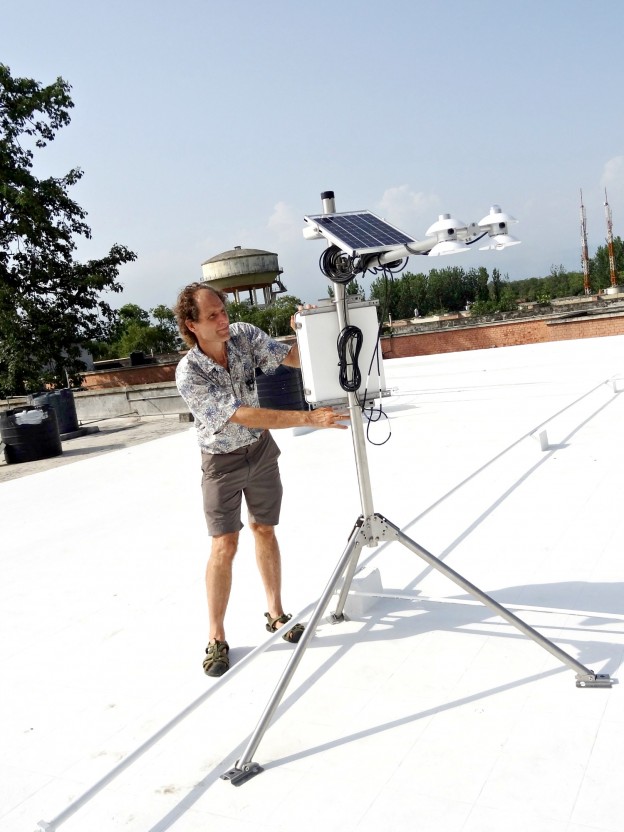As the global climate becomes hotter and drier, heat mitigation in urban areas through the use of cool roofs is becoming increasingly important. Cool roofs reflect more sunlight and absorb less heat than conventional roofs, according to the U.S. Department of Energy. In addition, cool roofs reduce air-conditioning requirements, greenhouse-gas emissions, and impacts to human health, including death during heat waves. Researchers from the Lawrence Berkeley National Laboratory (Berkeley Lab), Berkeley, California, reported an added benefit of cool roofs in Nature Communications (October 2017); that is, they found through regional climate simulations that cool roofs not only reduce indoor and outdoor temperatures, they also reduce outdoor irrigation water use by as much as nine percent. Los Angeles County, California, could save more than 80 million gallons of water per day, as a result, they said. See also: Albedo; Climate modeling; Drought; Global warming; Global climate change; Hydrology; Irrigation (agriculture); Plant-water relations; Urban climatology; Water conservation; Water resources

In the heat of summer, cool roofs may be 28–33°C (50–60°F) cooler than traditional roofs, according to the U.S. Environmental Protection Agency (EPA). This is because cool roofs use highly reflective coatings that also release most the absorbed solar energy at lower temperatures than traditional roofs. In contrast, a traditional black asphalt roof will reflect only about five percent of the Sun’s rays and may become 31–47°C (55–85°F; EPA) hotter than the air temperature on a hot sunny day. Because traditional roofs emit most of the heat they absorb, summer evening temperatures may be 12°C (22°F; EPA) higher in cities than in surrounding rural regions. See also: Insolation; Roof construction; Solar radiation; Sun
According to the Berkley Lab researchers, reducing urban air temperatures would reduce the amount of water needed to irrigate landscaping. Their analysis showed that if cool roofs were widely implemented, urban cooling of about 1.0–1.5°C would result. They also found that the cooling effects and water savings from cool roofs were greatest during the hottest days of the year. Although the study indicated that cool-roof benefits were more significant in urban regions, less densely populated regions also showed reductions in temperature and outdoor water use.





